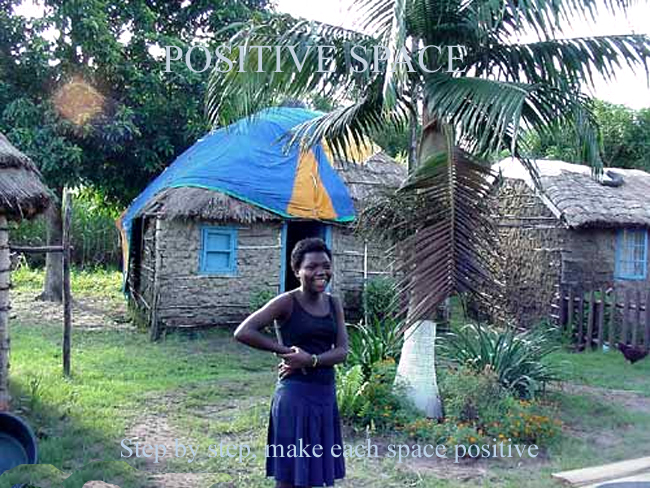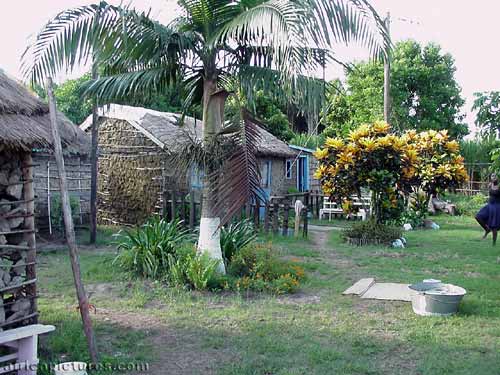
| A Fragment of the Generative Code for Neighborhoods |
| Back to Public Spaces Group |

The positive space at the core of a Zulu farm Thembi Mhlongo
|
Space, especially outdoor space, is positive when you experience its embrace. You feel its inside, and its outside, you experience its boundary, you can feel its center. It has definite shape, it has a character that arises only from the land itself and what is there, it is a comfortable place to be, it is in some respects "convex".
What matters most, is the you feel the place has a heart, you want to be there, something is going on -- it makes you feel a world of some kind, with its life, is happening there. You can make space positive, one step at a time, by making corrections. This works very well, you can feel your way into it, and you can watch the effects of what you are doing. Step by step, you make every piece of every part of outdoor space turn into something well-shaped and positive.
TAKE THESE UNFOLDING ACTIONS
Here is a second view of the Mhlongo farm. Now we see several positive spaces, not just the one we saw before. They are distinct, but overlapping. The positive spaces are made positive by a variety of elements, including fence, bushes, tree, woodpile -- all useful, and all accumulated over time.
 And the very same process can equally well be used for a great and magnificent place. Just as it can be informal, the process of creating positive space can also be formal and grand. Let us consider St Mark’s Square in Venice. It was made in about ten steps, over a period of a thousand years, each one roughly occuring every hundred years. The Square has a kind of L shape or hammerhead shape, and is composed of
three main “containers.” Yet we also experience it as one container. How then, does
this manage to be positive? It is, I think, because of the Campanile, built
before the main space was shaped, and shown as a small black square in the
right-hand plan below. The campanile forms a virtual center
at the corner which has the effect of generating three independent spaces, each
with good shape (shown gray in the right-hand plan below)), rather than being a single space with bad
shape.
St Mark’s Square seen from the water
You may find additional functional discussion of Positive Outdoor Space in A Pattern Language useful. Click anywhere on the yellow page to come back here
Back to Public Spaces Group © 2006 CES Terms of Use & Copyright Notice |